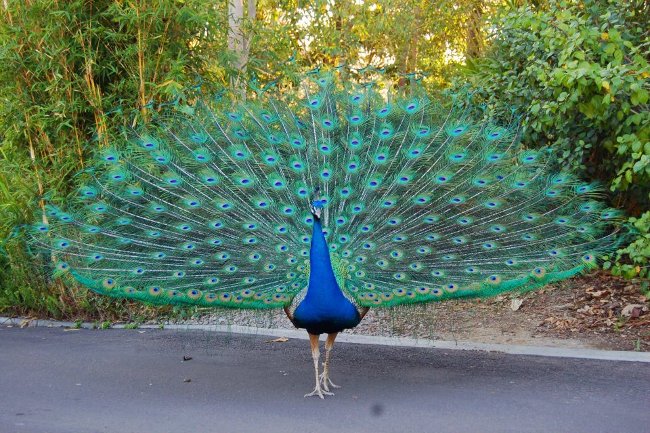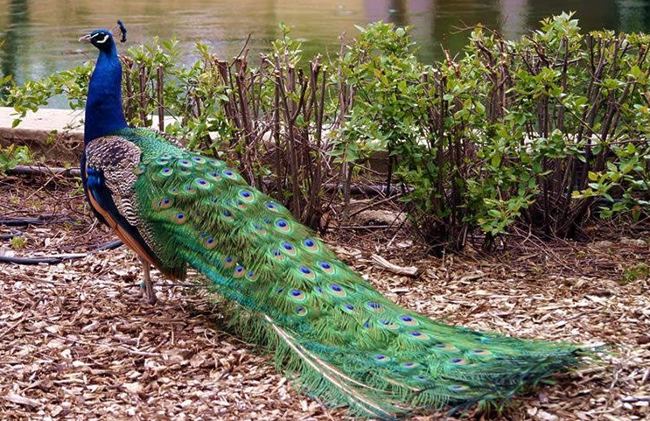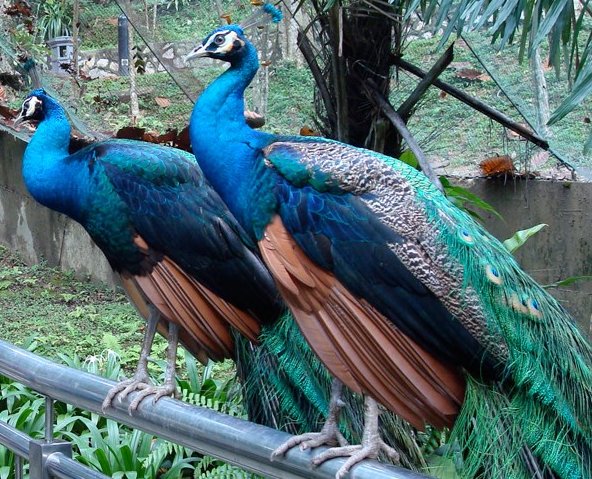The peacock is famous for its colorful tail feathers with many round black spots with yellow and blue borders that look like extremely gorgeous eyes. When fully spread, its tail feathers can form a fan shape up to 2 meters long.
Male peacocks spread their tails to attract female peacocks and mate. When feeling threatened by predators, male peacocks also spread their tails to make them look bigger and scarier.
 Male peacocks spread their tails to attract female peacocks.
Male peacocks spread their tails to attract female peacocks.
There are 3 types of peacocks: Indian peacocks, blue peacocks and Congolese peacocks . The most common peacock species seen in parks and zoos around the world is the Indian peacock. The head and neck of this peacock are covered with a layer of blue feathers arranged like fish scales. It originates from South Asian countries such as Pakistan, Sri Lanka and India.
The Congolese peacock is native to Central Africa. This species of peacock does not have as large a tail feather as the other two species of peacock. It is the national bird of the Republic of the Congo.
 The plumage accounts for 60% of the peacock's body weight.
The plumage accounts for 60% of the peacock's body weight.
Blue peacocks originate from Southeast Asia with bronze and yellow-green plumage. Blue peacocks live in areas such as Myanmar and Java. Due to hunting and shrinking habitat, this animal is in danger of extinction.
Plumage accounts for up to 60% of a peacock's total body weight. The wingspan of this bird can be up to 1.5m. This is one of the largest birds in the world.

The blue peacock originates from Southeast Asia.
A peacock can live over 20 years. The male peacock's tail feathers are most beautiful and brilliant when they are 5-6 years old.
The peacock's legs have spurs. They use their spurs mainly to fight with other male peacocks. Peacocks are omnivores. They eat a variety of plants, flower petals, seeds, insects, and even small reptiles such as lizards.

